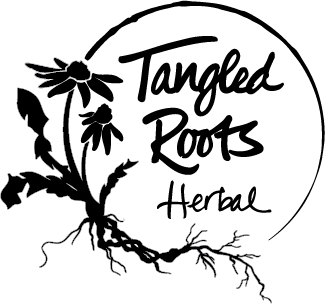Welcome, fellow nature enthusiasts! Today, we're delving into the captivating world of tinctures. If you're like me, you've probably heard whispers of their mystical healing properties but may not know exactly what they are or how to make them. Fear not, dear reader, for I am here to shed light on this ancient craft and guide you through the process with ease.
What Exactly Are Tinctures?
Let's start with the basics. Tinctures are concentrated herbal extracts made by soaking herbs in alcohol or a combination of alcohol and water. This method extracts the active compounds from the plant material, resulting in a potent liquid that can be taken orally. Think of tinctures as the superheroes of herbal remedies, packing a powerful punch in just a few drops.
The Benefits of Tinctures
Now, you may be wondering, why choose tinctures over other forms of herbal medicine? Well, allow me to enlighten you. Tinctures offer several advantages:
- Concentration: Tinctures are highly concentrated, meaning you get more bang for your buck in terms of potency.
- Long Shelf Life: Thanks to their alcohol base, tinctures have a longer shelf life compared to other herbal preparations.
- Easy to Use: Taking a few drops of a tincture is far simpler than brewing teas or concocting potions.
- Customizable: You can easily tailor tinctures to suit your needs by combining different herbs to target specific ailments.
How Are Tinctures Made?
Now for the fun part – making your own tinctures! Here's a simple step-by-step guide to get you started:
Ingredients:
- Dried herbs of your choice (such as lavender, echinacea, or chamomile)
- High-proof alcohol (at least 80 proof vodka or rum works well)
- Glass jar with a tight-fitting lid
- Cheesecloth or fine mesh strainer
- Amber glass dropper bottles for storing the finished tincture
Directions:
- Prepare Your Herbs: Start by thoroughly drying your herbs if they're fresh. You want to remove as much moisture as possible to prevent mold growth in your tincture.
- Measure Your Ingredients: For every 1 part dried herb, you'll need 2 parts alcohol. It's essential to maintain this ratio for optimal extraction.
- Combine Herbs and Alcohol: Place your dried herbs in the glass jar and cover them with the alcohol. Ensure the herbs are completely submerged.
- Infuse: Seal the jar tightly and store it in a cool, dark place for at least 4-6 weeks, shaking it gently every few days to agitate the mixture.
- Strain: After the infusion period, strain the liquid through cheesecloth or a fine mesh strainer to remove the plant material. Squeeze out as much liquid as possible.
- Bottle Your Tincture: Transfer the strained tincture into amber glass dropper bottles for storage. Label each bottle with the date and contents for future reference.
Recipes to Get You Started
Feeling inspired? Here are a couple of beginner-friendly tincture recipes to ignite your herbal adventures:
1. Calming Lavender Tincture
- 1 part dried lavender flowers
- 2 parts high-proof vodka
2. Immune-Boosting Echinacea Tincture
- 1 part dried echinacea root
- 2 parts high-proof vodka
Simply follow the directions above using your chosen herbs, and voila – you've created your very own tinctures!
In Conclusion
Crafting tinctures is not only a delightful way to connect with nature but also a practical means of harnessing the healing power of herbs. Whether you're seeking relaxation, immune support, or a boost of vitality, there's a tincture out there waiting to elevate your well-being.
So, gather your herbs, pour yourself a glass of patience, and embark on this enchanting journey of herbal alchemy. Your body and soul will thank you for it.
Until next time, happy brewing!


